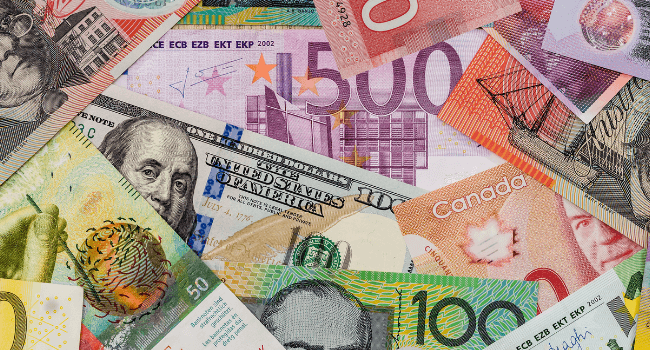The dollar in the 1970s
Immediately following the government’s
announcement that it would allow the Canadian
dollar to float, the currency appreciated sharply,
rising roughly 5 per cent to about US$0.97. It
continued to drift upwards through the autumn of
1970 and into 1971 to trade in a relatively narrow
range between US$0.98 and US$0.99. By 1972, the
Canadian dollar had traded through parity with its
U.S. counterpart. It reached a high of US$1.0443
on 25 April 1974.
The strength of the Canadian dollar
through this period can largely be attributed to
strong global demand, which boosted the prices of
raw materials. There were also large inflows of
foreign capital, partly reflecting the view that
Canada’s balance of payments was expected to be
less affected by the tripling of oil prices that
occurred through 1973 than that of other major
industrial countries, since it was only a small net
importer of oil.
During the early 1970s, the dollar’s strength
was also due to the general weakness of the U.S.
currency against all major currencies as the Bretton
Woods system of fixed exchange rates collapsed.
With the U.S. balance-of-payments deficit widening
to unprecedented levels,
the U.S. government
suspended the U.S. dollar’s convertibility into gold
on 15 August 1971 and imposed a 10 per cent
surcharge on eligible imports. This action followed
a series of revaluations of major currencies. On
18 December 1971, the major industrial countries
agreed (the Smithsonian Agreement) to a new
pattern of parities for the major currencies
(excluding the Canadian dollar) with a fluctuation
band of ±2.25 per cent. The U.S. dollar was also
A History of the Canadian Dollar 73
devalued by 8.57 per cent against gold, although it
remained inconvertible. This last-ditch attempt to
save the Bretton Woods system failed. By 1973,
all major currencies were floating against the
U.S. dollar.
The strength of the Canadian dollar against
its U.S. counterpart during this period concerned
the authorities, who feared the impact of a higher
dollar on Canada’s export industries at a time of
relatively high unemployment. Various measures to
rectify the problem were examined but dismissed
as being either unworkable or harmful.
These
included the introduction of a dual exchange rate
system, the use of moral suasion on the banks to
limit the run-down of their foreign currency assets,
and government control of the sale of new issues
of Canadian securities to non-residents. None of
these options was ever pursued (Government of
Canada 1972). However, under the Winnipeg
Agreement, reached on 12 June 1972, chartered
banks agreed, with the concurrence of the minister
of finance, to an interest rate ceiling on large,
short-term (less than one year) deposits. The
purpose of the agreement was to reduce “the
process of escalation of Canadian short-term
interest rates” (Bank of Canada Annual Report
1972, 15). Lower Canadian short-term interest rates
and narrower rate differentials with the United
States helped to relieve some of the upward
pressure on the Canadian dollar.

